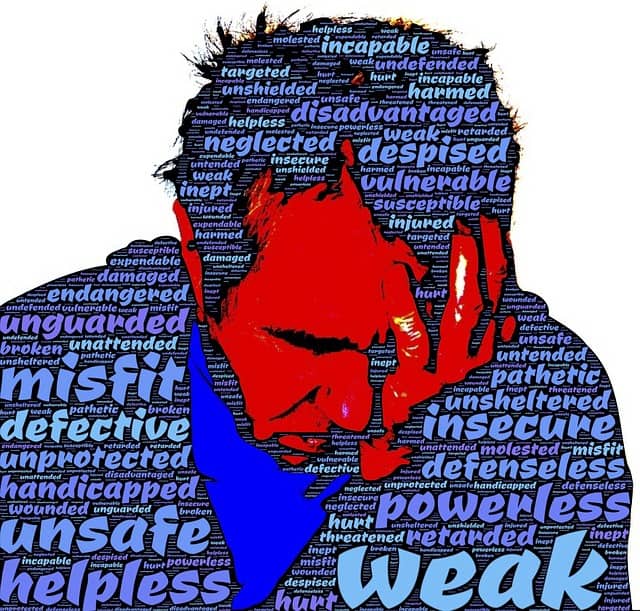Powerlessness is often a feeling which accompanies traumatic experiences in life. For a number of reasons we can often feel helpless, powerless, weak and unable to fight back. How can trauma survivors deal with this?
The first things is to acknowledge these feelings which are so often accompany trauma and are often re-experienced when going back over memories of the trauma.
Feelings of powerlessness and helplessness are common with traumatic experiences. Thankfully, these feelings can be resolved once the trauma is adequately processed with a suitable form of psychotherapy such as EMDR.
Being validated by a therapist or empathic, supportive person can be immensely helpful in the process or recovering from trauma.
However, we also single out EMDR as a crucial therapeutic technique for healing from trauma. By it’s very nature and methodology, it has the ability to allow a person to revisit their trauma, but do so with a very real sense of power and control. They get a chance to rework the experience and feel a sense of power they couldn’t at the time.
EMDR has already been widely recognized as a very effective treatment for trauma for a number of different reasons. However it is especially effective in dealing with the negative feelings about oneself that can so often continue to distress a person after they have experienced trauma.
Let’s look at the issue of trauma, powerless and resolution in more detail.
Contents
The Nature of Trauma and Powerlessness
The trauma people experience in their lives can take many different forms. It can range from more obvious massive scale traumas such as war and combat experiences, violent assaults, rapes, car crashes, other near death experiences and so on, right down the smaller scale life events, such as loss, bereavement, abuse, bullying, suffering infidelity etc.
The former are often called “Big T” traumas, and the latter “Small T” traumas. This distinction should not lead us to think that Small T traumas can be any less damaging to a person. In fact it has been shown that an accumulation of Small T traumas in the form of unpleasant life events can lead to have an impact on a person as big as experiencing a big T trauma.
One of the most damaging and unpleasant things about trauma is that when we experience it, we also have the tendency to insert into our memory of it a negative view about ourselves. James Alexander covers this in the video below. It is an unfortunate habit we seem to have as humans.
This can take many different forms, like “I am worthless”, “I am pathetic” and especially “I am powerless” or something similar. The feeling of not being in control in the traumatic event and not being able to assert power or fight back is often internalized into the person and sticks with them as a negative self belief that comes up whenever they revisit the memory of it.
This can be especially prevalent in cases of childhood abuse, since children by their very nature are powerless in the sense that they are still totally dependent on their parents. They cannot fight back if they are subjected to parental abuse in most cases and repeated and prolonged abuse can lead to deeply internalized feelings of powerlessness in the child which carry on into adulthood.
This is one of the pernicious aspects of trauma and why so many people struggle to move on from it unless it is properly treated. The negative beliefs about oneself that are so often formed when experiencing trauma stay stuck in the person and affect the way they perceive the world and interact with others.
In this you may find the common scenario of someone who cannot seem to “get over” something traumatic they experienced. They can often be guarded, paranoid, suspicious, anxious and withdrawn, not interested in socializing and living a very limited and closed off life. Negative beliefs that were formed alongside the trauma are often driving this.
The good news however is that it definitely does not have to remain this way. When properly treated, this trauma, and the negative self beliefs which accompany it, can be effectively dissolved and the person can come to live a much better life free from any self imposed psychological restriction. Let’s look at EMDR as a way of doing this.
Addressing Powerlessness With EMDR
Eye Movement Desensitization and Reprocessing or EMDR can be an excellent way of resolving feelings of powerlessness which can stay with people who have experienced trauma. An explicit part of the EMDR methodology is aimed at addressing these negative self beliefs that often go along with traumatic memories.
We have already gone into detail on how the EMDR process works in our lengthy article on the subject. However, we will also summarize it here briefly to explain how it can work in relation to trauma. See also the embedded video by Dr James Alexander for a full run down of the EMDR process.
During EMDR, clients are tapped back in neurologically to past traumatic memories, which are then processed using some form of bilateral stimulation, usually hand movements. Giving the client some kind of visual stimulus to follow back and forwards with their eyes whilst focusing internally on the traumatic memory has been shown to have enormous healing effects.
It appears that by giving the mind/brain something else to focus on alongside the traumatic experience, the emotional intensity of it is blurred and lessened, allowing the person to better let go of it. When processed to resolution, the memory is seen as just another memory and no longer distresses or burdens the person.
This EMDR methodology has been shown to be fantastically effective in helping clients resolve trauma in a far more rapid and fundamental way than other forms of therapy. Quite why it is so effective is still a matter of debate – see our article on the different hypotheses there are on this.
However, an explicit part of the EMDR process is to not only process trauma using eye movements, but also to install healthier, more adaptive beliefs after this processing, to futher solidify the person’s recovery from it. This is where resolving negative feelings like powerlessness comes into it.
Once the traumatic memory has been processed using the eye movements or other bilateral stimulation, the therapist will help the client replace any negative thoughts or feelings about oneself with healthier ones, like “I am powerful”, “I am in control” “I did the best I could” and so on.
The aim here is to get the client to a place where they feel positive things about themself when they revisit the trauma, instead of beating themselves up with negative thoughts about themself, like “I’m powerless”, “I’m worthless” and so on. These negative beliefs do nothing for the person and keep their self image low, so replacing them is vitally important.
When done correctly, the EMDR process ensures that this does happen, and clients often find that these installed positive beliefs are very empowering and do stay with them. Since the underlying trauma has also been rooted out, the negative self beliefs attached to it also dissolve, and the installation of positive self beliefs simply reinforces the process of resolution of the trauma.
Revisiting the Experience With a Sense of Power and Control
This restorative aspect of EMDR is confirmed by experienced practitioners of the therapy – see both the embedded videos for more on this. James Alexander emphasizes this issue of revisiting traumatic issues with a sense of power and control that wasn’t there when the trauma was initially experiened:
“Typically, when I’m doing EMDR with people, we’re usually working on experiences which happened to them, in which they had little or no control or choice whatsoever. Often we’re working with experiences in which things were done to my clients.
And considering that, because there was no choice when the bad thing happened, it’s incredibly important that when we’re revisiting these experiences that you actually have a very good sense of choice and power and control in this situation”
Dr James Alexander
The EMDR process is specifically designed to allow for this restoration of a sense of power and control and is very important in helping the person let go of the traumatic incident and no longer be burdened by it. They get a chance to re-visit it in a way that leaves them feeling good about themselves.
The practitioner in the video just above also brilliantly summarizes this aspect of EMDR allowing a person to take back full control of a traumatic experience by revisiting it in a safe, controlled environment and reworking it so the feelings of anxiety and powerless felt the first time are dissolved and replaced with healthier beliefs about oneself. Here are his thoughts on the issue:
“As I always say with clients, (EMDR is) just going to help you look at it as a rerun and not as if you’re seeing the movie for the first time. When you see a movie for the first time, you don’t know what’s coming, and you’re stuck in that anxiety of ‘What’s happening? What emotions am I feeling? What am I seeing?’
Whereas with a rerun, you know what’s coming. You know what’s happened to you, you know where you are, and you know you’re moving forward. That’s the goal.”
In this sense, EMDR is a powerful way of addressing feelings of powerlessness which can accompany trauma, and allowing the person to more effectively develop a healthier self image and move on from the trauma, instead of continually being crushed by it.
See also our Find a Therapist page if you are interested in pursuing EMDR further.






